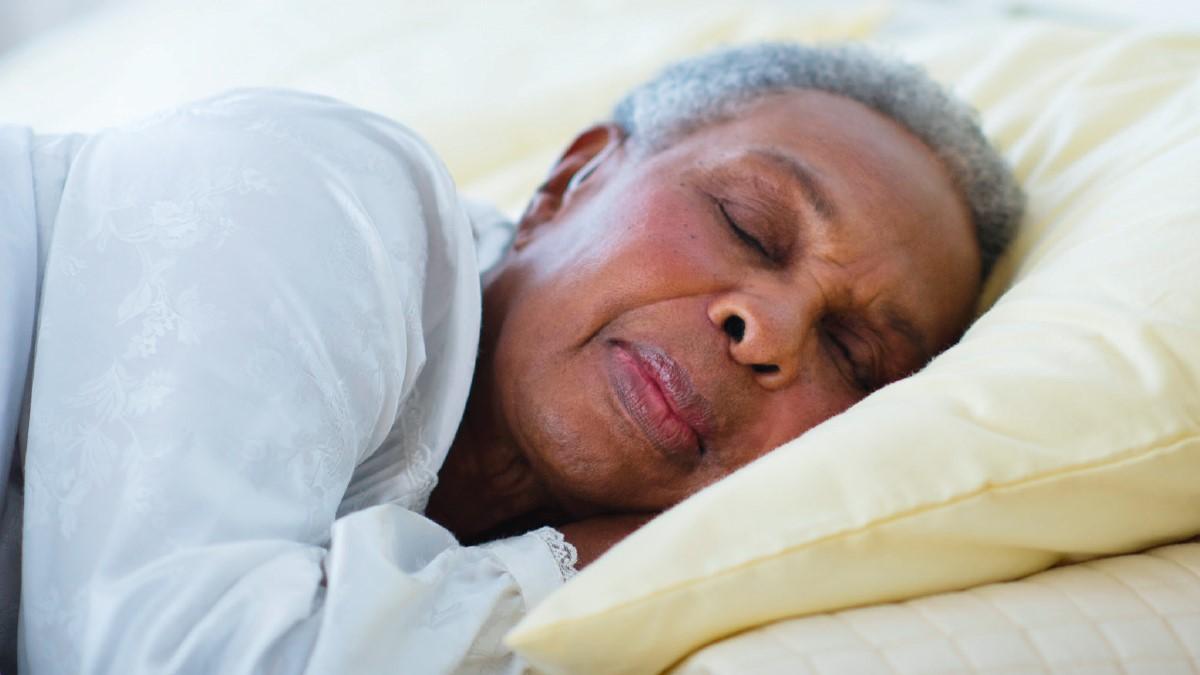Caroline White and Michele Harms on the latest physio research

The length and quality of nightly sleep may be linked to falls risk, suggests a US study of nearly 158,000 women. After taking account of other underlying conditions, medication and physical function, the analysis showed that compared with women in a recent study who clocked up seven to eight hours of sleep every night, those who slept for five or fewer hours, or 10 or more hours, had about a 25 per cent increased odds of recurrent falls (defined as at least twice in a year).
Furthermore, poor sleep quality, insomnia, and more sleep disturbances were also associated with increased odds of recurrent falls.
Short sleep length was associated with a moderately increased risk of all types of fracture, as well as arm, leg, and central body fractures, but not with an increased risk of hip fractures. The study participants, who were taking part in the Women’s Health Initiative, were monitored for an average of 7.6 years for falls and 12 years for fractures.
The annualised rate of recurrent fall ‘events’ was 10.6 per cent among women who said they slept for five or fewer hours of sleep every night; seven per cent among those sleeping seven to eight hours; and 11.8 per cent among women who slept for 10 or more hours.
Poor sleep may disrupt the diurnal rhythm of bone turnover and/or affect bone metabolism through other mechanisms, the researchers suggest.
‘Even though falls are caused by a number of factors, our paper focuses on a novel risk factor: sleep.
‘Results suggest that interventions aimed at improving sleep may reduce the risk of falls,’ says the lead author of the study, Dr Jane Cauley, of the University of Pittsburgh, USA. Cauley JA, et al. Characteristics of Self-Reported Sleep and the Risk of Falls and Fractures: The Women’s Health Initiative (WHI) Journal of Bone and Mineral Research November 21 2018.
Physiotherapy Journal December 2018
Physiotherapy journal editor Michele Harms highlights some ‘in press’ papers in latest Physiotherapy Journal. As a CSP member you can access the journal free on the CSP website.
Back pain, the over 60s
The management of non-specific low back pain receives much attention, yet the best approach remains controversial. This systematic review was conducted by an international group of authors from Canada and Brazil, to examine the available interventions to manage the condition in older adults. They observe that older people with back pain tend to receive more ‘passive’ treatments. Eighteen randomised controlled trials fulfilled the eligibility criteria which provided moderate evidence to show that a ‘complementary health approach’ (ie, manual therapy, acupuncture, mindfulness, yoga), percutaneous electrical nerve stimulation (PENS), education, exercise or pharmacological agents were not effective in producing a clinically significant reduction in pain and disability. This was true in both the short and intermediate term when compared to sham, usual care or minimal intervention. Effectiveness of interventions for non-specific low back pain in older adults. A systematic review and meta-analysis do Nascimento PRC, Costa LOP, Araujo AC, Poitras S, Bilodeau M.
Treadmill training, Parkinson’s and MS
In this paper, the authors explore whether task-specific training has an effect on the mobility of individuals with progressive neurological conditions like Parkinson’s disease and multiple sclerosis. They performed a systematic review and meta-analysis of randomised controlled trials investigating the effect of task-specific training on mobility and falls rate. Although the sample sizes were small in the 16 studies analysed, the authors found some evidence to suggest that treadmill training improved comfortable walking velocity, stride length and step length in patients with Parkinson’s and endurance in people with MS, and conclude it may be effective in improving mobility in people with Parkinson’s and MS, but that the effectiveness of over-ground walking is uncertain.
Case mix and PROMS
This paper explores the argument for providing an appropriate case-mix adjustment model to enable fair comparisons of patient reported outcome measure (PROM) data in musculoskeletal services.
The authors reviewed published models which commonly included baseline PROM score, age, sex, comorbidities, symptom duration and surgical history. They argue that these models will allow service providers, researchers and other stakeholders to take account of variations in patient factors, when comparing health outcomes. Models used for case-mix adjustment of PROMs in musculoskeletal healthcare: A systematic review of the literature Burgess R, Bishop A, Lewis M, Hill J. DOI: doi.org/10.1016/j.physio.2018.10.002
New gait performance test
New outcome measures are useful tools to monitor progress and describe relevant changes in both individual patients and cohorts for research purposes. The Four Square Step Test (FSST) provides a measure of gait performance, balance and physical function. The authors provide reliability and validity data in a cohort of patients with hip osteoarthritis before and after total hip replacement. They conclude that the FSST is a valid and reliable measure of multi-directional stepping speed and balance. Reliability and validity of the Four Square Step Test in patients with hip osteoarthritis before and after total hip replacement: Batting M, Barker KL.
Comments and conclusions
- Teen obesity may be linked to up to a four-fold heightened risk of pancreatic cancer in adulthood, finds a study of 1.7 million people whose health was tracked for an average of 23 years. Cancer 2018
- Pilates not only improves physical function, but may confer additional benefits, suggests a qualitative study on its impact among 21 people with various long-term musculoskeletal conditions. Musculoskeletal Care 2018
- The onset of musculoskeletal problems associated with statin use differs by drug, reveals an analysis of unwanted side effects submitted to the US Food and Drug Administration Adverse Event Reporting System. Onset was significantly faster with high-intensity statins, including atorvastatin and rosuvastatin, than with simvastatin. Pharmacology Research & Perspectives 2018
Number of subscribers: 1




































